Today our starting point is "Vidhan Sabha Metro Station" (Yellow Line), Exit-2. Walk north for about 500 meters, and the gate is on the left (just opposite the road on the right, which leads to the Gurdwara or Majnu Ka Tila). Remember, the park we are going to visit today is open from 6 AM to 10 AM. So reach there before 9 AM. If you miss the time, you can enter the park after 4 PM..
Bonta Park
Historical Park
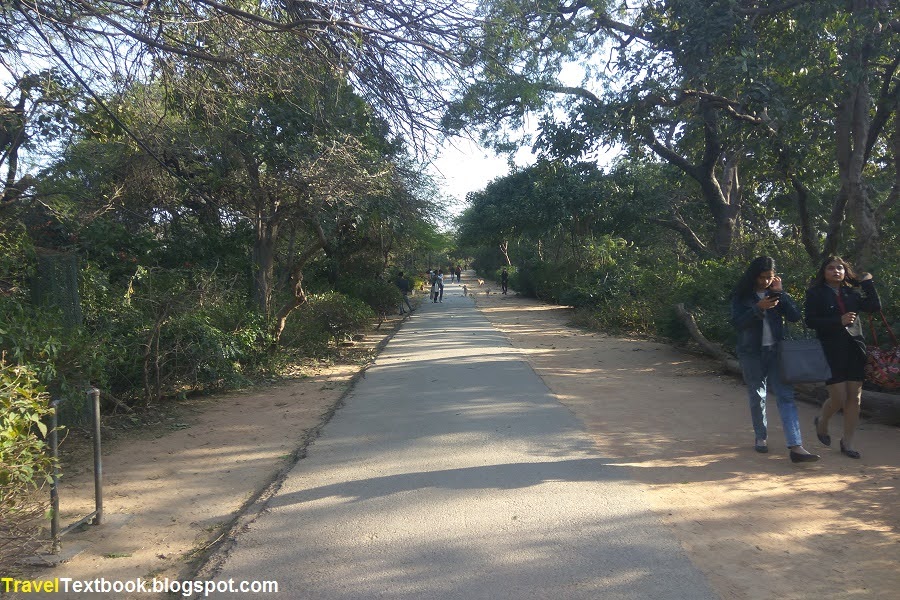
Now we are at the north-east gate of "Bonta Park", a historical park, where the British built a few structures around 1828, and the structures are still inside.
Bonta Park is located in the Northern Ridge, also called "Kamla Nehru Ridge".
A ridge is a long, narrow, elevated structural land that is steeply separated from the surrounding terrain.
The Delhi Ridge acts as a "green lung" for the city and protects Delhi from the hot winds of the Rajasthan desert to the west. This has enabled Delhi to become the second most bird-rich capital city in the world after Nairobi, Kenya.
The Delhi Ridge is today, for administrative reasons, divided into 4 separate zones. They are- 1. Northern Ridge, 2. Central Ridge, 3. South-Central Ridge, 4. Southern Ridge.
From the north-east gate, I walked about 250 meters south and saw the North Guard House on my left.
North Guard House:
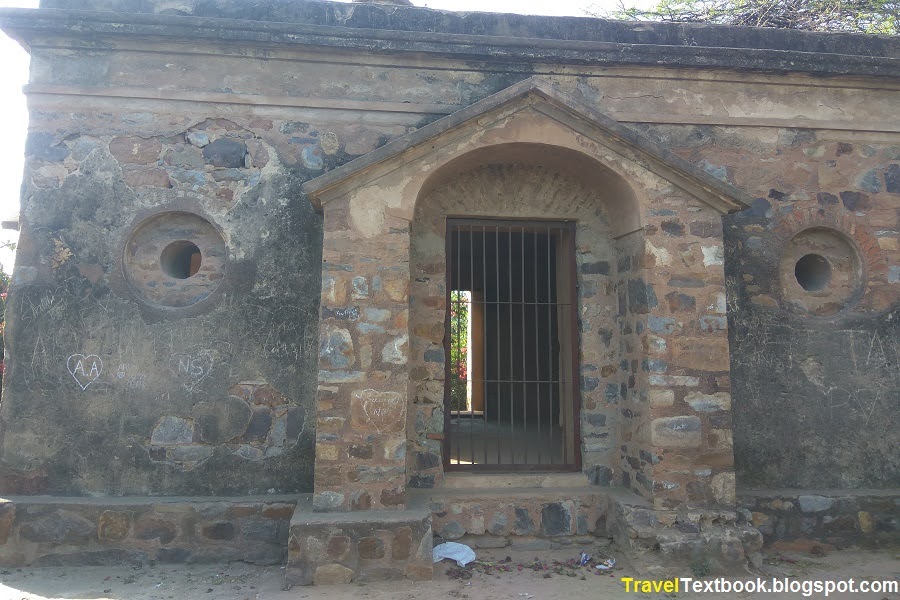
This guard house was probably built around 1828 along with the Flagstaff Tower.
I walked more about 270 meters south, and reached at Flagstaff Tower.
Flagstaff Tower:
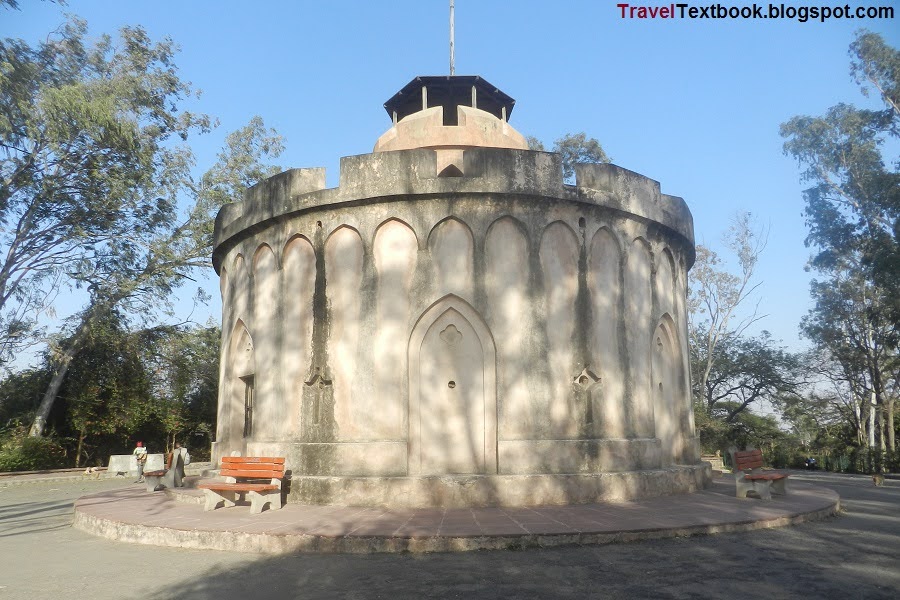
Flagstaff Tower is a one-room tower, built around 1828 by the British Indian Army, the building was part of the British garrison and was used as a signal tower. The area where the tower was built was the highest point of the ridge and was mostly barren, covered with low scrub. Many Europeans and their families took refuge on 11 May 1857 during the Indian Rebellion of 1857, awaiting help from nearby Meerut. Afforestation here started in 1910. Today it is a memorial and "protected monument".
I walked again 270 meters from Flagstaff Tower towards southwest and found another guard house on my right. Then I turned south and Seismological Observatory is few meters away. Continued walk about 450 meters and reached at Chauburji Masjid.
Chauburji Masjid:
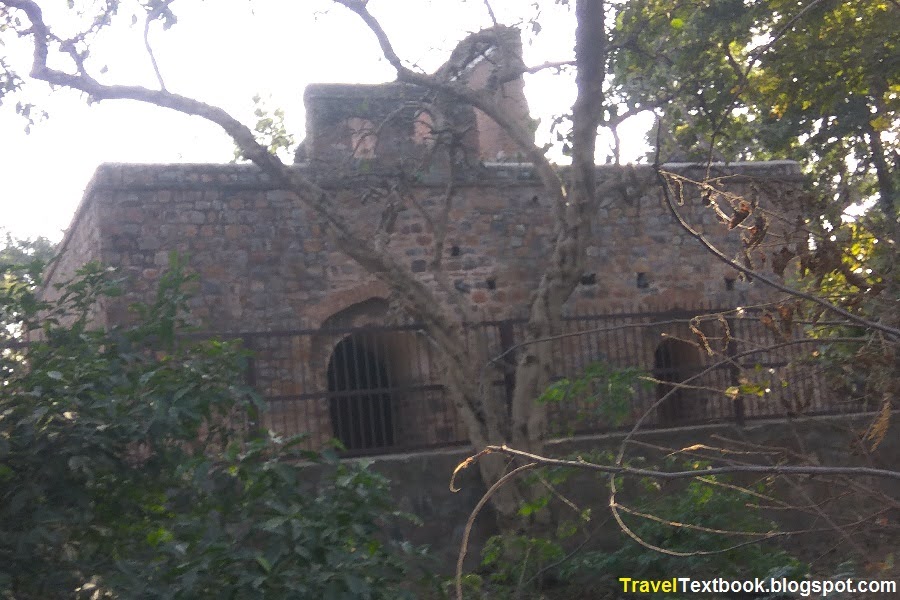
This mosque is believed to have been built by Feroze Shah Tughluq in the 14th century. The Mughals later added a few structures to the mosque and during the days of the Indian Rebellion of 1857 it was used by the British as a picket and ammunition depot.
I came out of Bonta Park through the gate on the right side of the mosque.
Visiting Time: Bonta Park is open from 6 AM to 10 AM and 4 PM to 7 PM. Try to exit early due to security reason.
Entry Fee: Free.
Photography: Photography is allowed, video not allowed.
How to go: From "Vidhan Sabha Metro station" (Yellow Line), Exit-2, I walked about 500 meters towards north, and the gate is located on the left (opposite of the road came from Gurudwara from the right). It is located about 950 meters from the Gurdwara Gate.
Pir Ghaib
Historical Landmark
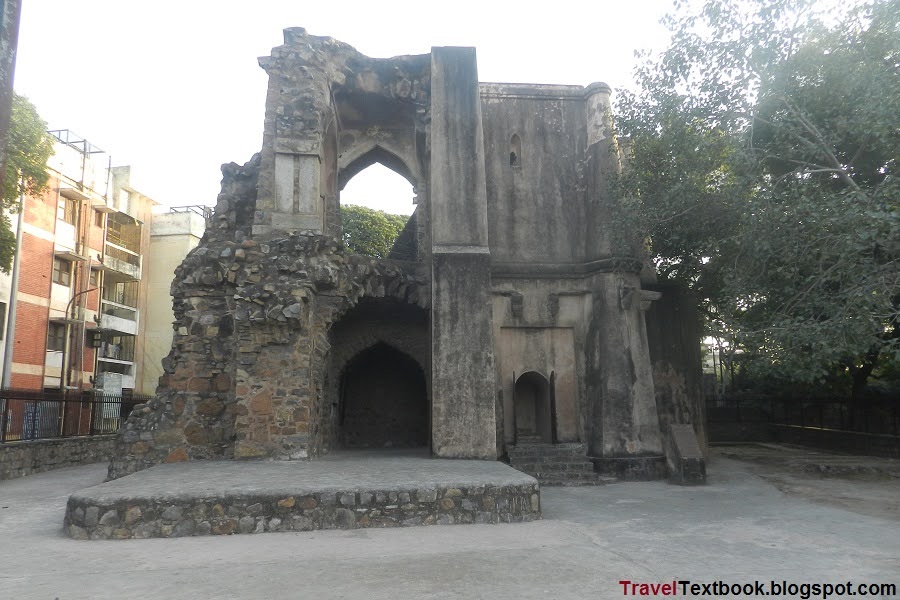
The monument, and the step-well next to it, were believed to have been built by Sultan Firuz Shah Tughlaq in 1351 AD, after the death of his beloved son Fateh Khan, to help him divert his mind by hunting. That's why he built this as his hunting lodge. It is a two-story structure and consists of a hollow masonry cylinder, believed to have been used as a hunting lodge and observatory, it is also believed to have been used as a clock tower.
The original name of the monument was Koshuk Shikar Palace (Hunting Lodge). Its current name Pir Ghaib literally means the Vanishing Saint. It is said to be the story of an Islamic saint, who occupied a part of the building after it was abandoned by the rulers, and disappeared after the end of his life. Due to this miracle he came to be known as 'Pir Ghaib'.
Entry Fee: Free.
Photography: Photography is allowed. It is in Hindu Rao Hospital area. So be careful while taking pictures, because the hospital authorities are very rude. They have harassed tourists before.
How to go: There is a gate next to Chauburji Masjid. I came out to "Chauburja Marg". I started walking to the left (south-east). After 110 meters there are two road on the right (west). One is going down and another is going straight. I entered the road going straight named "Rani Jhansi Road", and walked about 420 meters, and found a gate on my right. I entered the gate and found the historical monuments of Pir Ghaib.
Baoli, Pir Ghaib
Step-well

The baoli was the only source of water in this area. This baoli was built by Firoz Shah Tughluq in 1354. Originally, the baoli had a tunnel, it is no longer accessible. It was the only source of water for British officers and soldiers during the Mutiny of 1857. It is said that the British Army was afraid that Indian sepoys deployed in the army would poison its water, so a guard was permanently stationed in the area. Today this baoli is almost ruined.
Entry Fee: You cannot enter inside the step well.
Photography: Photography is allowed from outside. It is in Hindu Rao Hospital area. So be careful while taking pictures, because the hospital authorities are very rude. They have harassed tourists before.
How to go: The left side road adjacent to the structure (the road goes to your right side if you look at the structure) goes behind the structure for about 100 meters towards Hindu Rao Hospital. Baoli is located on the left before the hospital.
Asokan pillar
Historical Landmark
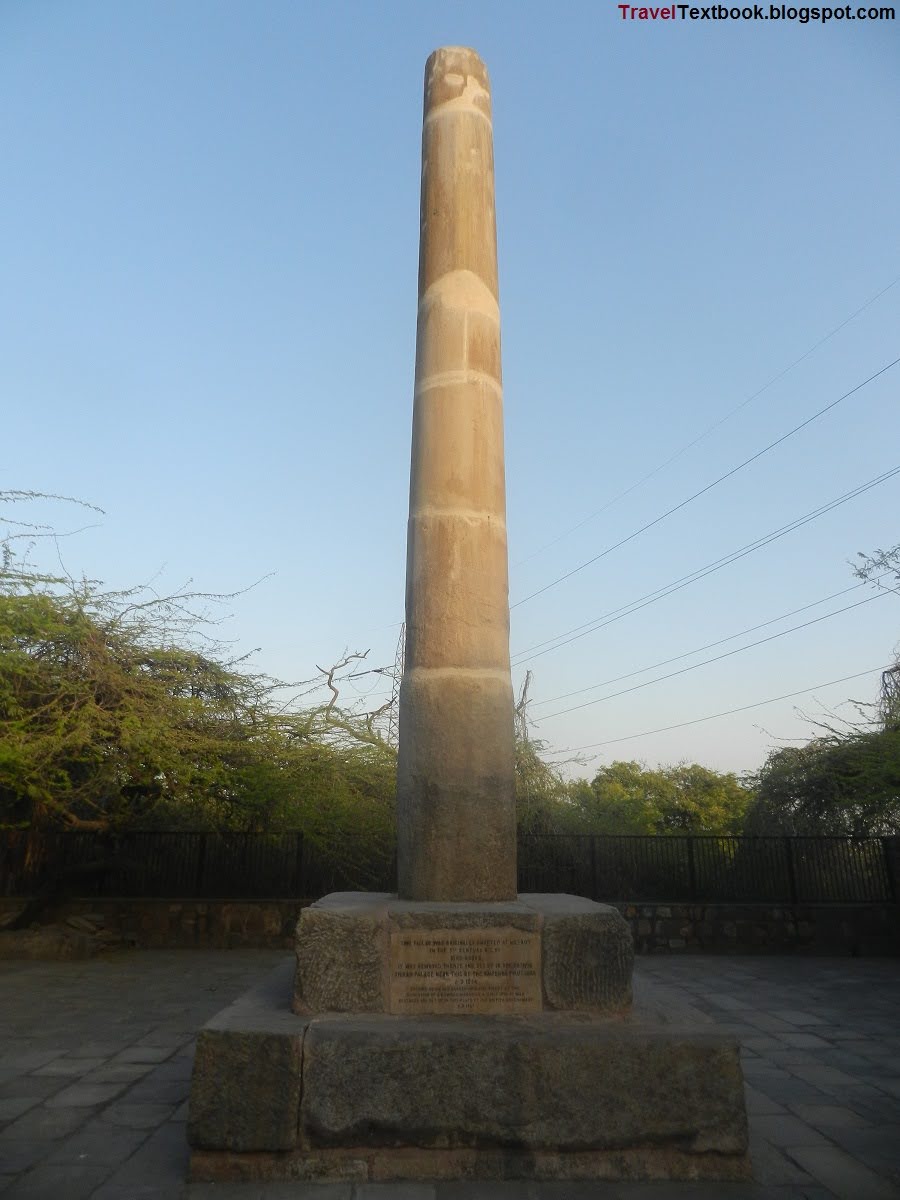
The 3rd Mauryan Emperor Asoka The Great who reigned from c. 268 to 232 BCE. The pillars were built by him, and used the expression pillars of the Dharma to describe his own pillars. Of the pillars erected by Asoka, twenty still survive including those with inscriptions of his edicts. Feroz Shah Tughlaq, who ruled as Sultan from Delhi from 1351 to 1388, saw Ashokan pillars during one of his campaigns, one at Topra near Ambala and the other near Meerut. He shifted the both pillars from these places and installed them in Delhi in 1356. The first Asokan Pillar (Pillar Edicts I, II, III, IV, V, VI, VII) moved from Topra, was erected next to the Friday Mosque in the new city of Ferozabad. The second pillar (Pillar Edicts I, II, III, IV, V, VI) moved from Meerut, was installed near Pir Ghaib (Koshuk Shikar Palace) in 1356.
The pillar was broken into five pieces by the explosion of a powder magazine in between 1713-1719. It was restored and setup in this place by the British Government in 1867.
Entry Fee: You cannot enter inside the premises.
Photography: Photography is allowed from outside.
How to go: After exiting the Pir Ghaib gate I walk to the right (south) for about 330 meters, through Rani Jhansi Road to a roundabout. I saw a pillar at the south-east corner of the roundabout. I approached the pillar.
Mutiny Memorial
Memorial
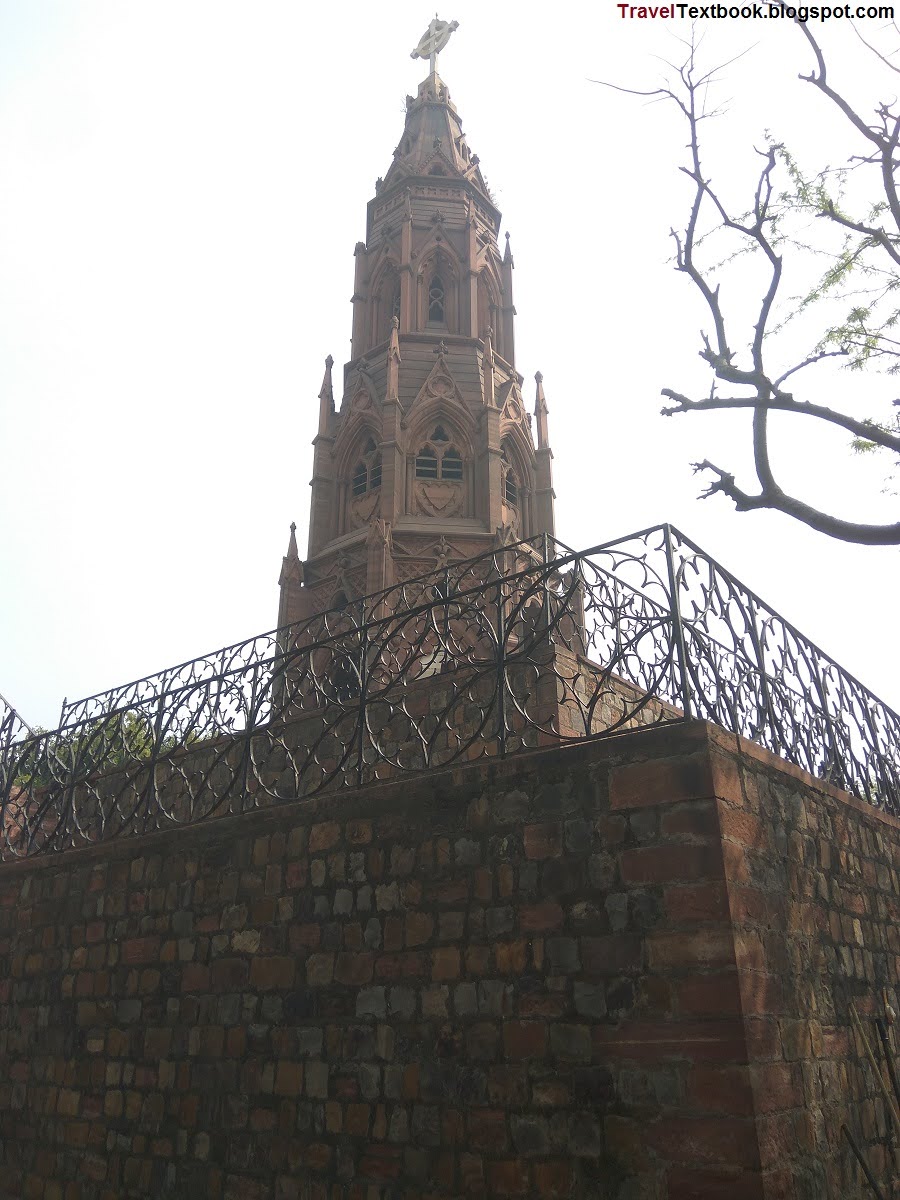
The Mutiny Memorial also called "Fatehgarh" was built in 1863 to commemorate the Delhi Field Force, who were killed between 30th May to 20th September 1857. It was the site occupied by Taylor's Battery during the Indian Rebellion of 1857. In 1972, on the 25th anniversary of India's independence, a plaque was installed in the name of heroism of the immortal martyrs for Indian freedom. Name of the soldiers are inscribed on the marble tablets on all sides of the memorial.
Entry Fee: You cannot enter the monument. There is a guard inside. You can enter just to take a picture from the ground.
Photography: Photography is allowed from outside.
How to go: I walked about 300 meters from Ashoka Pillar to the south through the road called "Dr Karnwal road" and saw the Mutiny Memorial on my left.
The nearest metro station is "Pulbangash Subway Station" (Red Line), about 600 meters to the south from Mutiny Memorial. I walked there and, I found elevator on the left of the entrance. I got into the elevator, turned left and went straight. At the end, I turned right and passed through the checking point and entered by the Smart Card. Then I took the escalator on the right to reach the metro platform. Then I went to GTB (Guru Teg Bahadur) Nagar Metro Station (Yellow Line) exit-5, via Kashmere Gate Metro station (interchange of Violet, Red and Yellow Line).
Coronation Park
Historical Park
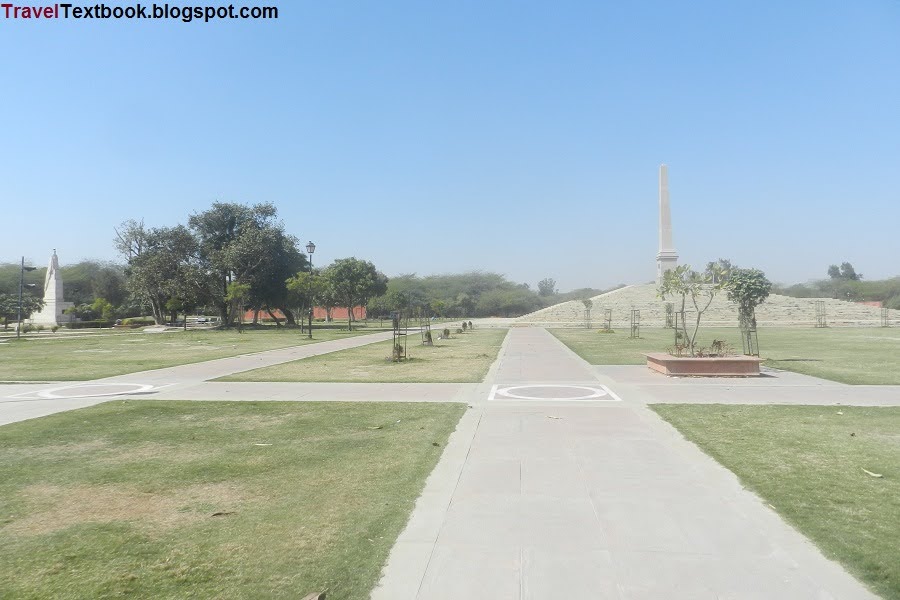
It was the site of the Delhi Durbars. The first Durbar was initiated by the then Viceroy of India, Lord Lytton (1831–1891), held on 1 January 1877 to proclaim Queen Victoria as Empress of India.
Second Durbar was held here on 1 January 1903 to celebrate the coronation of King Edward VII.
The third and final Durbar was organized in 1911 here. Lord Hardinge organized the Durbar. King George V was the first monarch of the United Kingdom to join the Durbar. Queen Mary was with him. King George V and his Queen sat on a golden throne under a golden umbrella on 12 December 1911 when they announced that the capital of British India would move from Calcutta to Delhi. After the Coronation Durbar, Edwin Lutyens was authorized by Lord Hardinge to proceed with the plan to build New Delhi. Shifted the capital to Delhi in 1912, as announced by the King in 1911.
First I went straight to the Coronation Memorial, an obelisk made of sandstone, placed on the exact spot where three British Durbars had been held in the past. It is placed on a high place with stairs on all four sides.
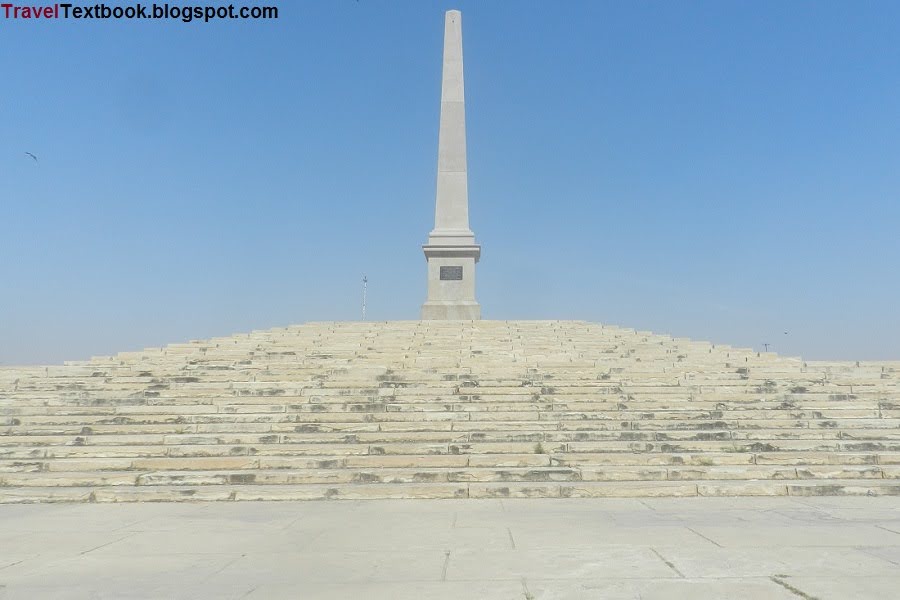
I went south of the obelisk. After India's independence on 15 August 1947, some statues of former British kings, governors and officials of the British Raj were moved to the park. The 15 meter high marble statue is the tallest statue of King George V. The statue was removed from the front of India Gate, which now houses a statue of Netaji Subhash Chandra Bose.
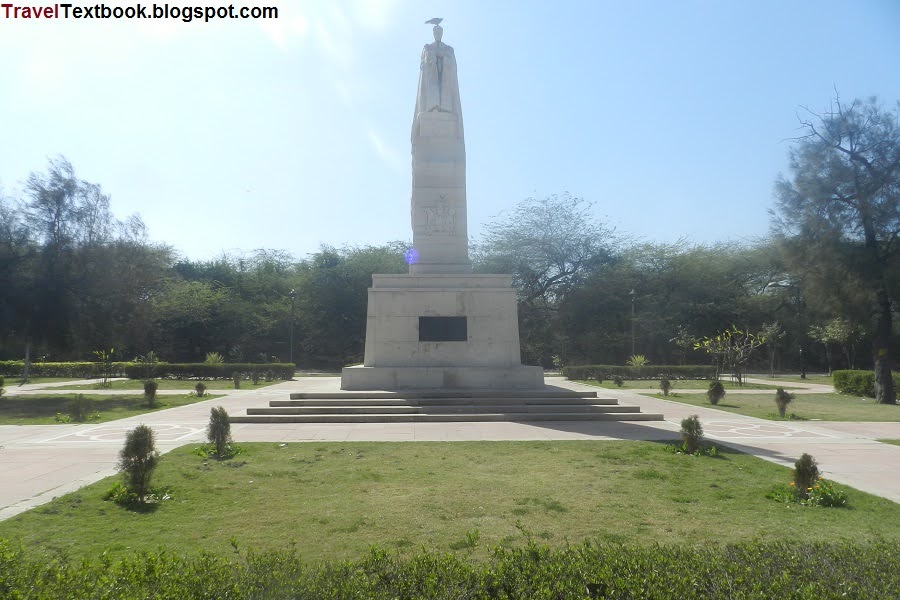
North of the obelisk is an amphitheater. An open gym has been built to the northeast of the amphitheater. A children's play area has been created to the east of the open gym.
Visiting Time: 6 AM to 5 PM every day.
Entry Fee: Free.
Photography:Photography is allowed.
How to go: The East Gate of the park is located about 2 km east from the Majlish Park Metro Station. So I didn't want to waste energy on a long walk in the morning. So, I went to Kashmere Gate Metro Station (Violet, Yellow and Red Line Interchange). Then I boarded the Yellow Metro Line, and went to GTB (Guru Teg Bahadur) Nagar Metro Station (Yellow Line), Exit-5. After getting out the escalator just left u-turn, you will reach to the road. Walk left. Then turn again first left. Coronation Park Gate is approximately 2.5 km north from here. You will see many auto goes to "Jharota". Just tell the driver to drop you at the Coronation Park. Fare is 15 Rupees.
Nirankari Sarovar
Organization
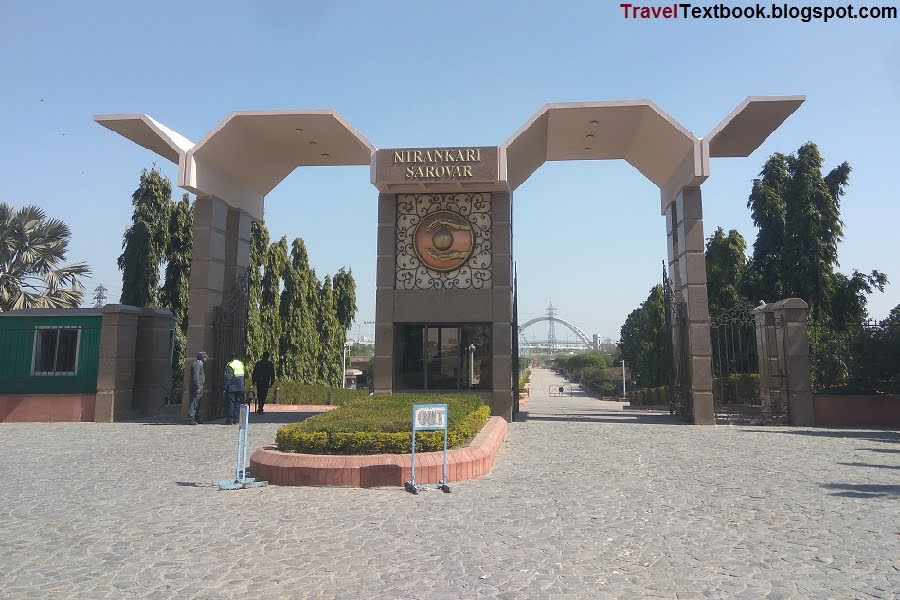
Nirankari is a new religion that reformed Sikhism. It was founded by Baba Dyal Das (1783-1855) in northwest Punjab in 1851.
Baba Dayal believed that Sikh practices and rituals of life were different from Guru Nanak's when he was alive. Baba Dayal rejected idolatry, the Khalsa stance against living gurus, and the Sikh scriptures as a closed book. He believed that Nama-Simran or repetition of the divine name leads to salvation. He started a Sikh reform movement in 1851 to revise existing beliefs and practices. The main devotional practice was to repeat the name of the formless God as a mantra, Dhan, Dhan Nirankar, meaning "Glory, glory to the Formless One". Their prayer is different from that of Khalsa Sikhs. They call "Nirankar" instead of "Bhagauti" and include living Gurus after Guru Gobind Singh in their list of traditions. The original place of worship of the Nirankaris was called Dharamshala rather than Gurudwara.
Sant Nirankari Mission is a another religious group which is modified Nirankari. It was founded in 1929 by Buta Singh (1873–1943).
The organization teaches "Self-realization through God-realization". Being born as a human being through the cycle of rebirths is described as superior to all other species of beings created by God. Nirankaris believe that it is "meaningless to worship" until one has vision of God. Just repeating the word "water" will not quench your thirst. One must feel the "water" and take it to quench your thirst. It focuses on the fact that God is formless yet exists in all forms.
Visiting Time: You cannot take your camera inside and you cannot keep it anywhere or at the gate for security reason. But traveler must have a camera and so they will never enter the premises. But funny thing is that, cell phone is allowed. So leave the place and go for the next.
Entry Fee: Free.
Photography:Photography is not allowed.
How to go: It is located about 450 meters from Coronation Park gate towards north.
Majnu ka Tila
Area

Officially called New Aruna Nagar Colony.
During the reign of Sikandar Lodi (reigned 1489–1517), a local Iranian Sufi Abdullah, nicknamed Majnu, met Sikh Guru Nanak Dev on 20 July 1505. Majnu ferried people across the river Yamuna for free as a service to God, his devotion. That's why the area is called "Majnu Ka Tila".
After the Sino-Indian War in 1962, many refugees who had earlier settled temporarily near the Indo-China border were relocated here in a portion of "Majnu Ka Tila" area. Today, this portion is home to the second generation of Tibetan refugees and is also known as "Little-Tibet" or "Mini-Tibet". This place in Majnu Ka Tila has become more popular among tourists.
All 3 gates are located on the west side of the area. I got off the bus under the foot over bridge and walked north. I saw the 1st gate on the right.

Entering the gate, I saw a narrow walkway, Tibetan shops on both sides of the road.

Then I turned to the left and after some distance I saw a temple.
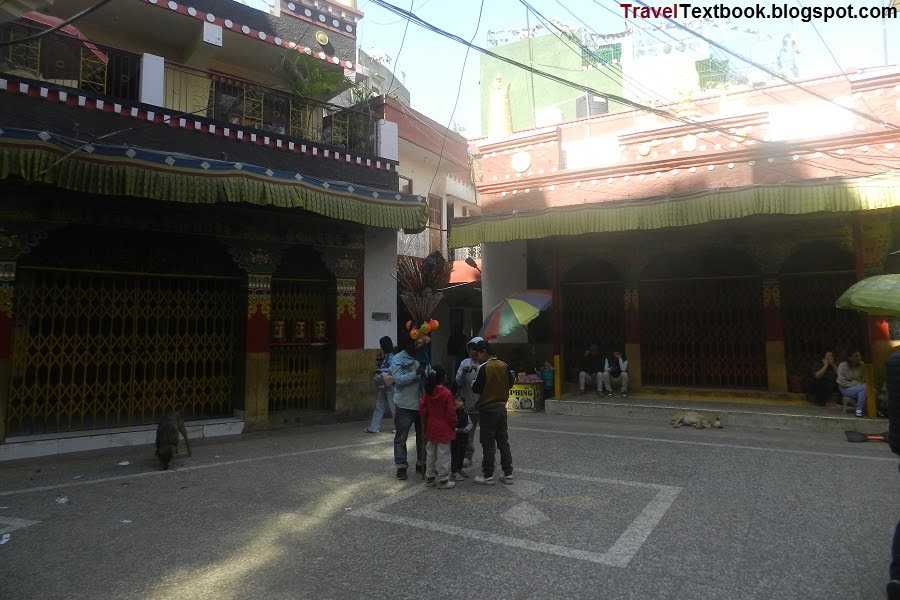
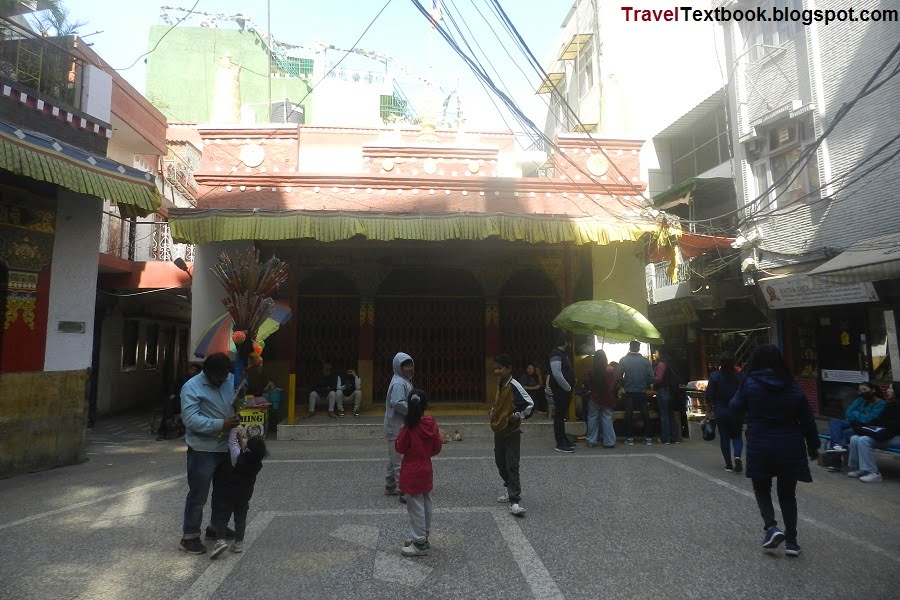
In the far right corner is a stall selling "Laphing". I bought one for 50 rupees. It was spicy.
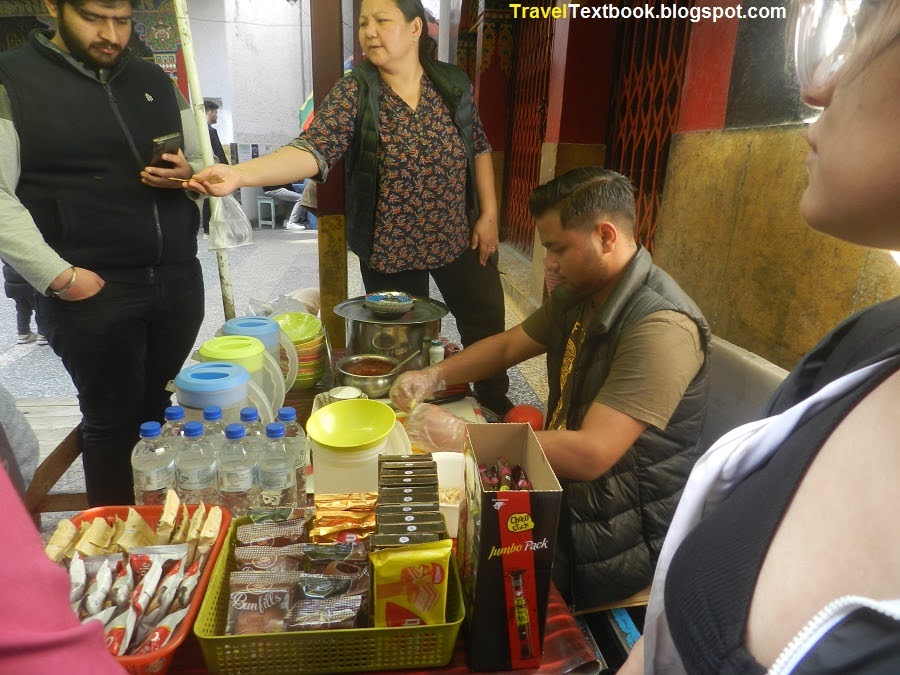
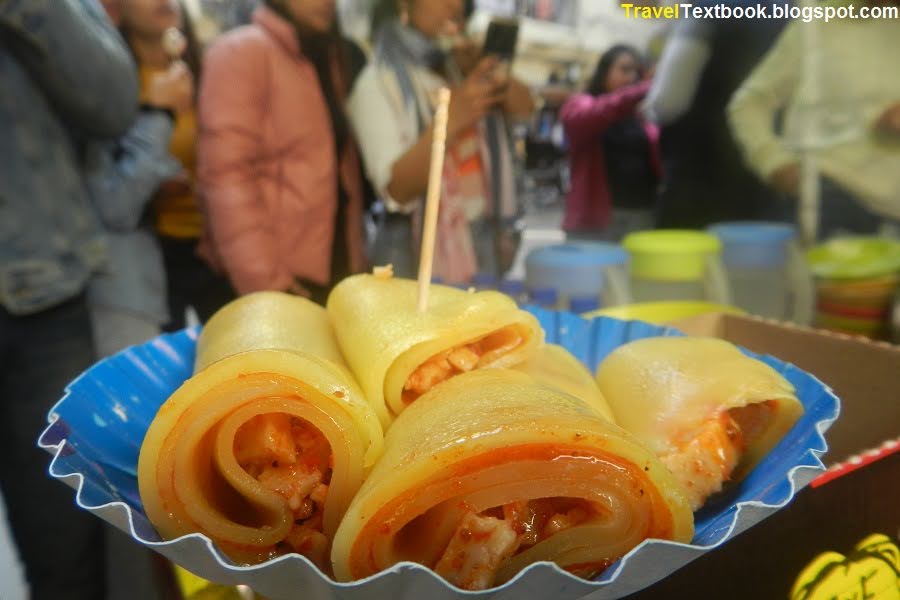
While walking, there is a hotel called “New Peace House”. Room fare 700, 800 and 1000 Rupees. But all the rooms are occupied. At the end of the road is Gate-3, and before the gate on the right is Majnu Ka Tila Park. There is nothing special inside the park.
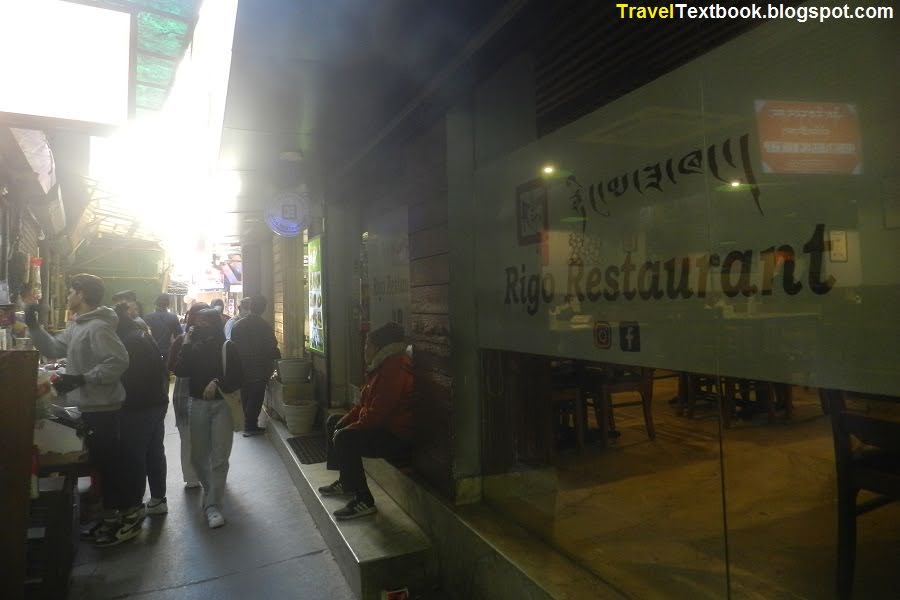
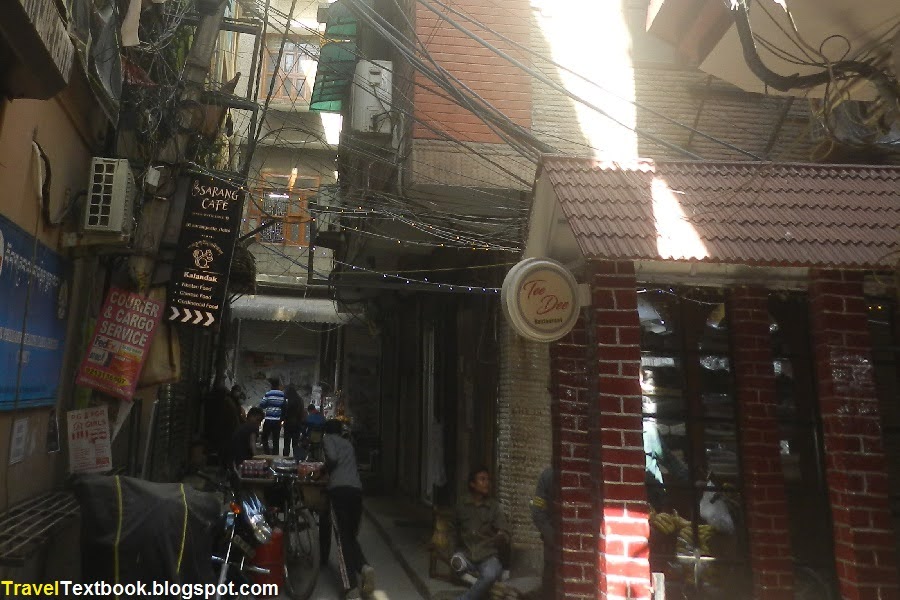
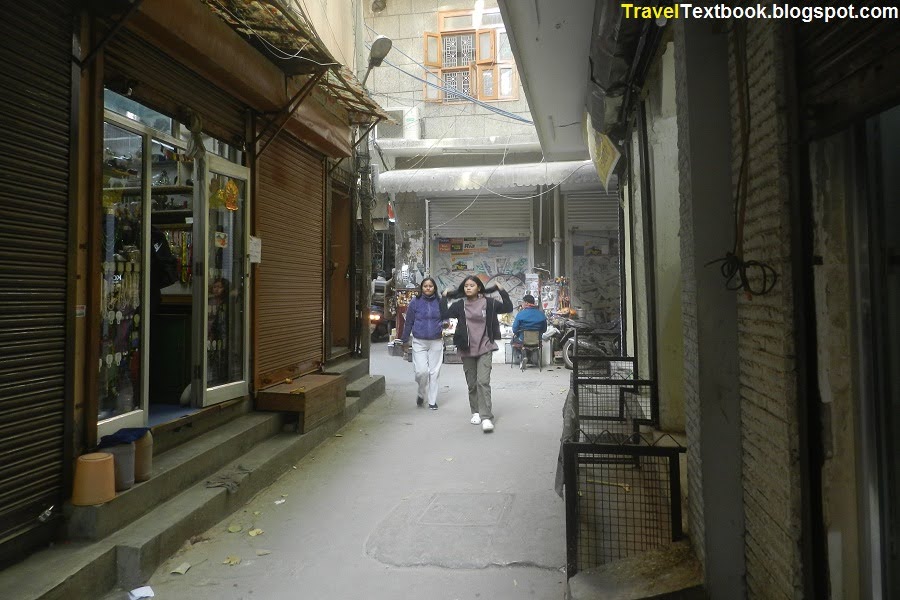
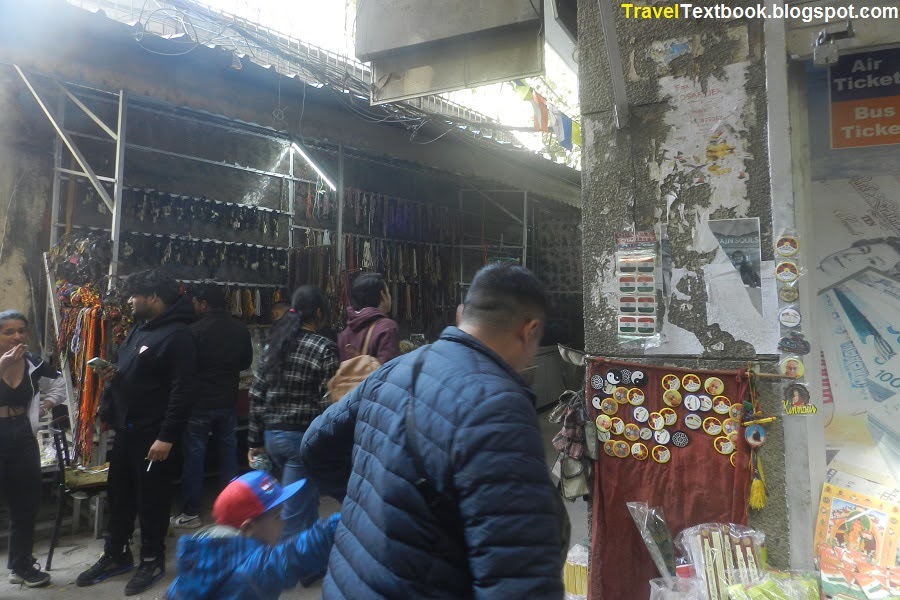
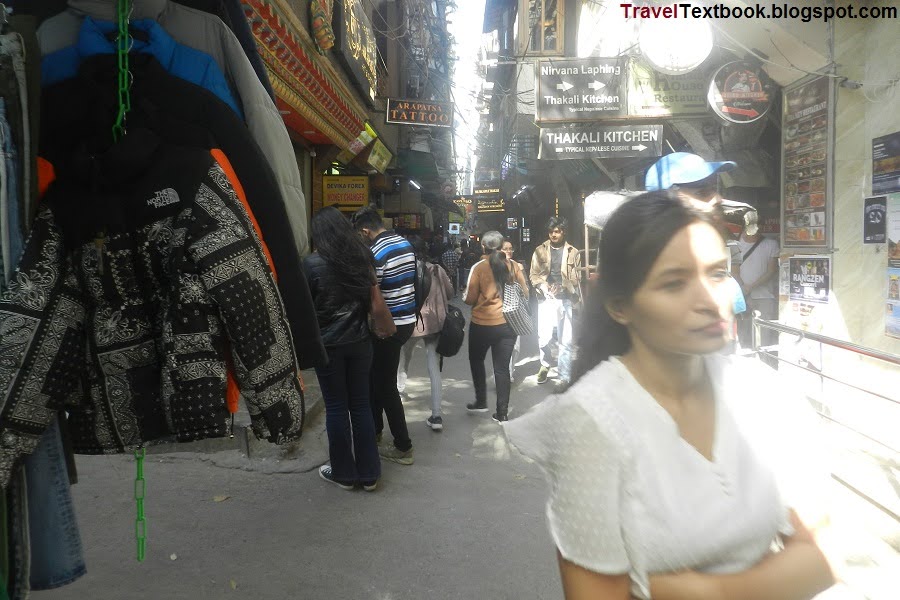
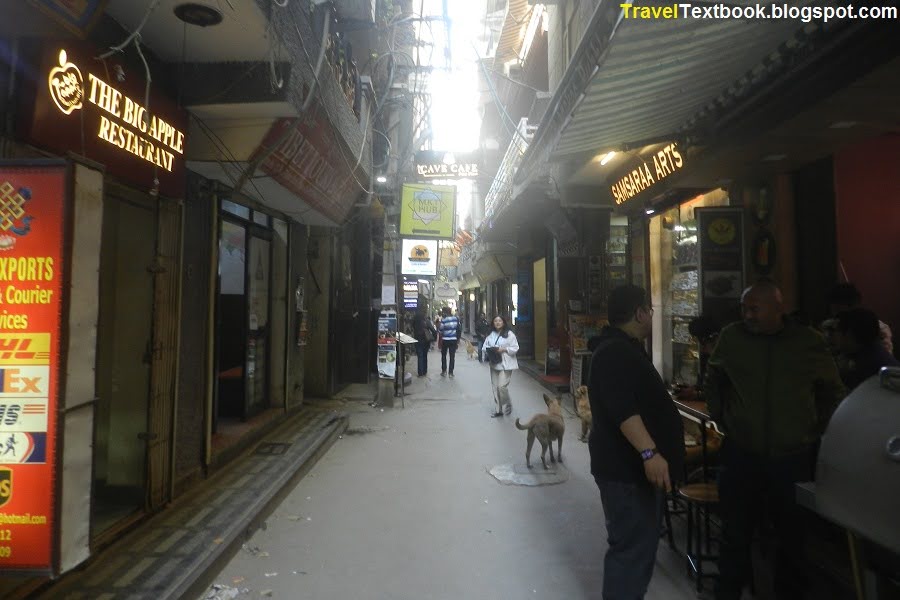

Return the same way, have your lunch here. You can eat pancakes at Ama Cafe, Thukpa at Rigo Restaurant, Mud Cake at Coffee House and Shabalay at Tee Dee. Exit through Gate-1 (the gate through which I first entered).
Entry Fee: Free.
Photography: Photography is allowed.
How to go: From Nirankari Sarovar I walked about 250 meters north and crossed the ring road to the Burari Crossing bus stop. From there board a yellow micro type bus to Majnu ka Tilla bus stop, just below the foot over bridge. It is a journey of about 4.5 km and costs 15 Rupees.
Gurdwara Majnu Ka Tilla
Gurdwara

It is one of the Gurdwara of Sikh religion. It is said that during the reign of Sultan Sikandar Shah Lodi (reigned 1489-1517), a person camped here on a small hill. He became very thin by fasting. Lost in thought, he sits in meditation day after day, to get a glimpse of God. He was so oblivious to the world around him that people started referring to him as "Majnu" (crazy). The place came to be known as "Majnu Ka Tila". When he was not meditating, he used his small boat to ferry people across the Yamuna free of charge.
One day Guru Nanak, while walking by the river, came to Majnu on 20 July 1505 and gave him his blessings. The knowledge he sought to attain, Majnu became a devoted disciple of the great Guru. Guru Nanak stayed here for a few days. It is said that Guru Nanak was so pleased with Majnu's dedication that he told his new devotee, "Your name shall be immortal". Hence the temple was named Gurdwara Majnu-ka-Tilla (Majnu's Hill) in the holy memory of this once Muslim saint.
When Sixth Guru, Guru Hargobind (19 June, 1595 - March 19, 1644) was invited to Delhi by Emperor Jahangir (reigned: 1605 - 1627), he stayed at Gurdwara Majnu-ka-tila. On his way back to Punjab after leaving Delhi, Guruji again visited the hilltop, Majnu-ka-tila.
When the seventh Guru, Guru Har Rai sent his son Ram Rai to explain the principles of Sikhism to Emperor Aurangzeb (reigned: 1658 - 1707), he also stayed at Majnu-ka-tila. There is a well in the premises of this holy shrine. It is said that Ram Rai showed his miracle to Aurangzeb near this well.
General Baghel Singh built seven small structures in a span of eight months from April to November 1783. They are -
1. Gurdwara Nanak Piao 2. Gurdwara Bangla Sahib 3. Gurdwara Damdama Shahib 4. Gurdwara Majnu Ka Tilla 5. Gurdwara Mata Sundri 6. Gurdwara Rakab Ganj 7. Gurdwara Sis Ganj
The small, old marble Gurdwara that still exists today was built by Maharaja Ranjit Singh (November 13, 1780 - June 27, 1839).
In 1950 a large and present Gurdwara building was built by the Sangat of Delhi.
You can enter the premises. If you want to enter the white temple, you have to take off your shoes and socks at the free counter. Then take a head covering from a basket in front of the shrine gate. Then you can enter the shrine. The well is located on the right side of the shrine.
Khalsa's birthday is celebrated here on Baisakhi day. On this day, all the Sikhs from the surrounding area gather here. Many people of different religions, castes join the Sikhs of Delhi. During the festival, a special langar (free meal) is arranged.
Entry Fee: Free.
Photography: Photography is allowed inside the premises but prohibited inside the shrine.
How to go: It is located about 450 meters from Tibetan gate towards south.
Aah.. I just finished my journey today. The nearest metro station is "Vidhan Sabha Metro Station" (Yellow Line), about 1.4 km towards southwest. You can take auto from the opposite road of the Gurudwara towards metro. But I walked there.
Hope this post will help you. Write your comment below and please share it with your friends.
You May Also Like
Travel Delhi: Day-1
Travel Delhi: Day-2
Travel Delhi: Day-3
Travel Delhi: Day-4
Travel Delhi: Day-5
Travel Delhi: Day-6
Travel Delhi: Day-7
Travel Delhi: Day-8
Travel Delhi: Day-9
Travel Delhi: Day-10
Travel Delhi: Day-11
Travel Delhi: Day-12 (You are here)
Travel Delhi: Day-13
Travel Delhi: Day-14
Travel Delhi: Day-15
Travel Delhi: Day-16
Travel Delhi: Miscellaneous
Click below to go


No comments:
Post a Comment